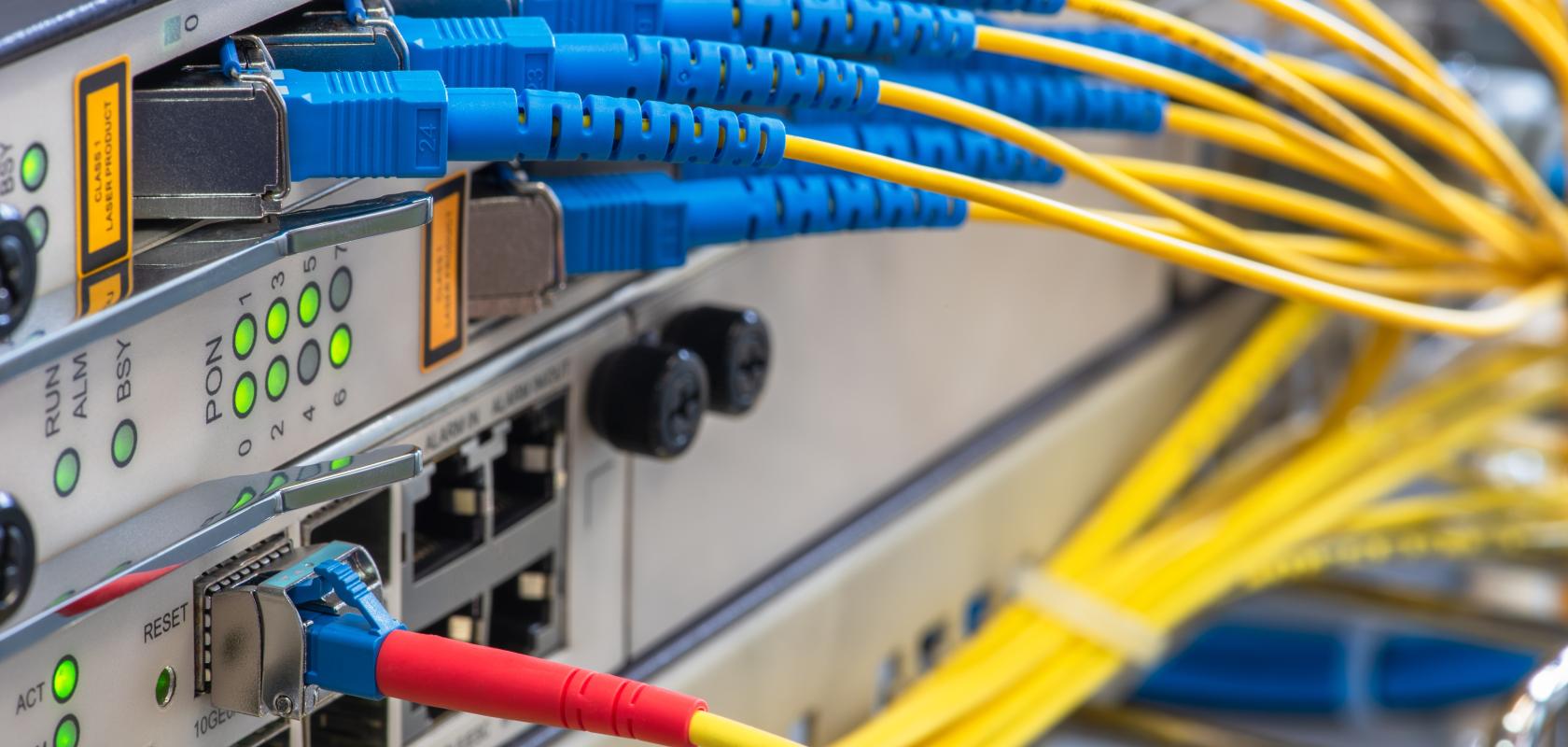What is Optical Line Terminal (OLT)?
In modern communication networks, the optical line terminal (OLT) is the core device to realize point-to-multipoint (P2MP) in passive optical network (PON) architecture. The OLT is responsible not only for transmitting data from the core network to user terminals but also for managing bandwidth, ensuring network security, and handling fault detection. As network demands become more complex, a variety of OLT types have emerged in the market to meet different application needs.
What is Optical Line Terminal (OLT)?
An Optical Line Terminal is a key component of a passive optical network (PON), a telecommunications technology that brings fiber optic cabling and signals all or most of the way to the end user. The OLT is responsible for converting incoming optical signals into electrical signals, which are transmitted over traditional copper cables to the end-user’s devices. This process enables high-speed data transfer and reliable connectivity for a seamless user experience.

Working of Optical Line Terminal (OLT)
An Optical Line Terminal consists of the following components – CPU, power supply, fan unit, service frame, and other uplink boards. Data is received at its input in electrical form, which converts it into an optical signal and transfers data through optical fiber cables to the splitters or PON network heads.
OLT has two main types of data tasks – downstream (getting data from a global network) and upstream (getting data from users). OLT supports dynamic routing protocols like RIP (routing information protocol) and SPF (small form factor pluggable), ensuring a secure network. It is thus used for many common applications like Wi-Fi, CATV (community antenna television), and security management. An OLT can work at a maximum distance of 20 km.
The Features of OLT
The Optical Line Terminal sends ethernet data to the optical network unit (ONU), initiates and controls the ranging process, and records the ranging information. It provides numerous prominent features listed as follows.
- A downstream frame processing means receiving and churning an asynchronous transfer mode cell to generate a downstream frame and converting the parallel data of the downstream frame into serial data thereof.
- A wavelength division multiplexing means performing an electro/optical conversion of the serial data of the downstream frame and performing a wavelength division multiplexing thereof.
- An upstream frame processing means extracting data from the wavelength division multiplexing means, searching an overhead field, delineating a slot boundary, and processing a physical layer operations administration and maintenance (PLOAM) cell and a divided slot separately.
- A control signal generation means performing a media access control (MAC) protocol and generating variables and timing signals used for the downstream frame processing means and the upstream frame processing means.
- A control means for controlling the downstream frame processing means and the upstream frame processing means by using the variables and the timing signals from the control signal generation means.
Benefits of Optical Line Terminal
- High-Speed Connectivity: OLTs enable the delivery of ultra-fast broadband speeds over fiber optic networks, meeting the growing demand for bandwidth-intensive applications such as video streaming, online gaming, and cloud computing.
- Scalability: OLTs are designed to support large numbers of subscribers, making them highly scalable solutions for telecommunications providers. As network demands increase, additional OLTs can be deployed to accommodate more users without compromising performance.
- Reliability: Fiber optic technology offers greater reliability compared to traditional copper-based systems, as it is less susceptible to interference from electromagnetic radiation and environmental factors. OLTs contribute to the overall reliability of the network infrastructure, ensuring consistent connectivity for subscribers.
- Cost-Effectiveness: Despite the initial investment required for deploying fiber optic infrastructure, OLTs contribute to long-term cost savings for service providers. Fiber optic networks have lower maintenance costs and require less frequent upgrades compared to copper-based systems, resulting in improved return on investment over time.

The Role of Optical Line Terminals in Fiber Optic Networks
The main role of an Optical Line Terminal (OLT) is to gather and share data traffic with many subscribers on the network. By centralizing the management of network resources, OLTs enable service providers to efficiently allocate bandwidth, monitor network performance, and troubleshoot connectivity issues in real time. This level of control and flexibility is essential for delivering high-quality services to a large customer base.
Conclusion
Optical line terminals are vital to powering the next generation of fiber optic networks. These sophisticated devices are the backbone of modern telecommunications infrastructure, providing high-speed connectivity, scalability, reliability, and security for millions of users worldwide. As the demand for high-bandwidth services continues to grow, OLTs will remain a key enabler of digital transformation and innovation in the telecommunications industry.